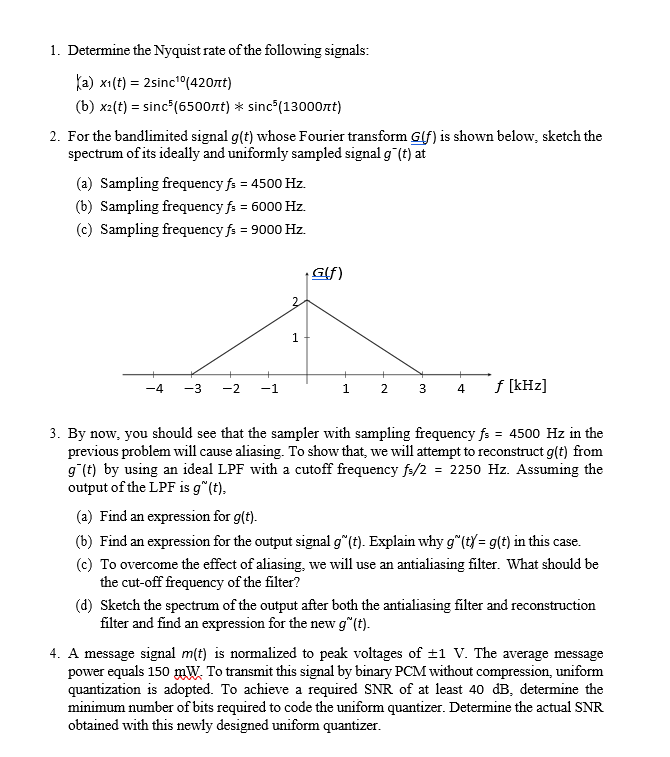Home /
Expert Answers /
Electrical Engineering /
1-determine-the-nyquist-rate-of-the-following-signals-a-x1-t-2sinc10-420t-b-x2-t-pa530
(Solved): 1. Determine the Nyquist rate of the following signals: (a) x1(t)=2sinc10(420t) (b) x2(t)= ...
1. Determine the Nyquist rate of the following signals: (a) (b) 2. For the bandlimited signal whose Fourier transform is shown below, sketch the spectrum of its ideally and uniformly sampled signal at (a) Sampling frequency . (b) Sampling frequency . (c) Sampling frequency . 3. By now, you should see that the sampler with sampling frequency in the previous problem will cause aliasing. To show that, we will attempt to reconstruct from by using an ideal LPF with a cutoff frequency . Assuming the output of the LPF is , (a) Find an expression for . (b) Find an expression for the output signal . Explain why in this case. (c) To overcome the effect of aliasing, we will use an antialiasing filter. What should be the cut-off frequency of the filter? (d) Sketch the spectrum of the output after both the antialiasing filter and reconstruction filter and find an expression for the new . 4. A message signal is normalized to peak voltages of V. The average message power equals . To transmit this signal by binary PCM without compression, uniform quantization is adopted. To achieve a required SNR of at least , determine the minimum number of bits required to code the uniform quantizer. Determine the actual SNR obtained with this newly designed uniform quantizer.
Expert Answer
Nyquist theorem states that, for the perfect reconstruction of a signal without aliasing, the sampling frequency should be at least twice the maximum
